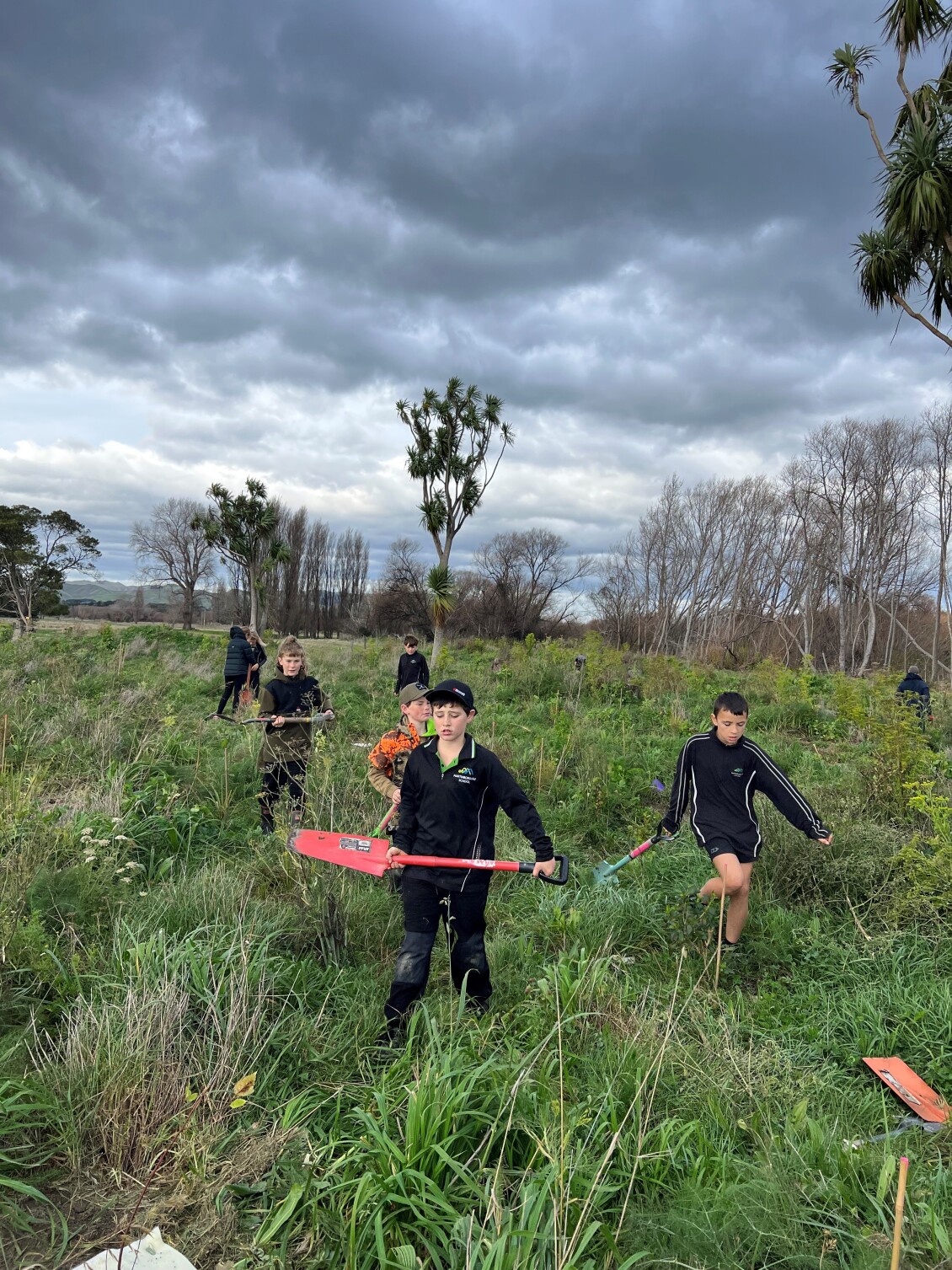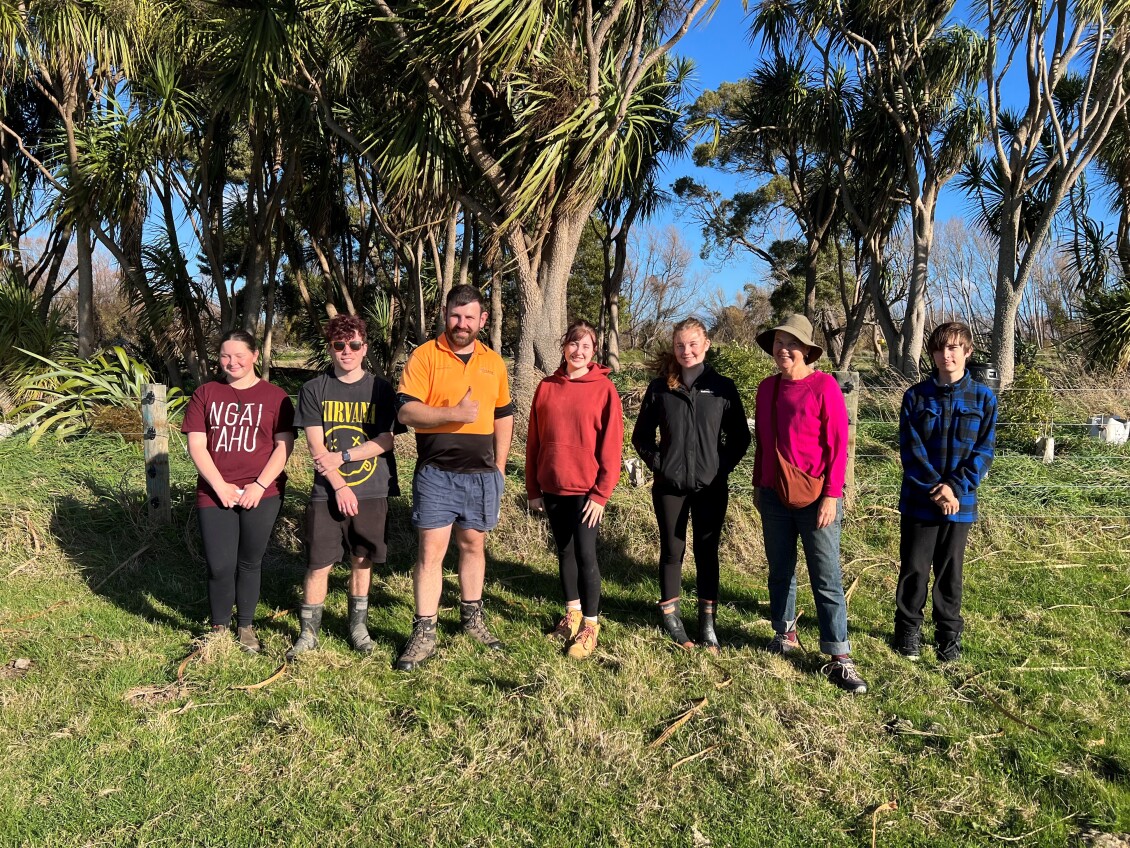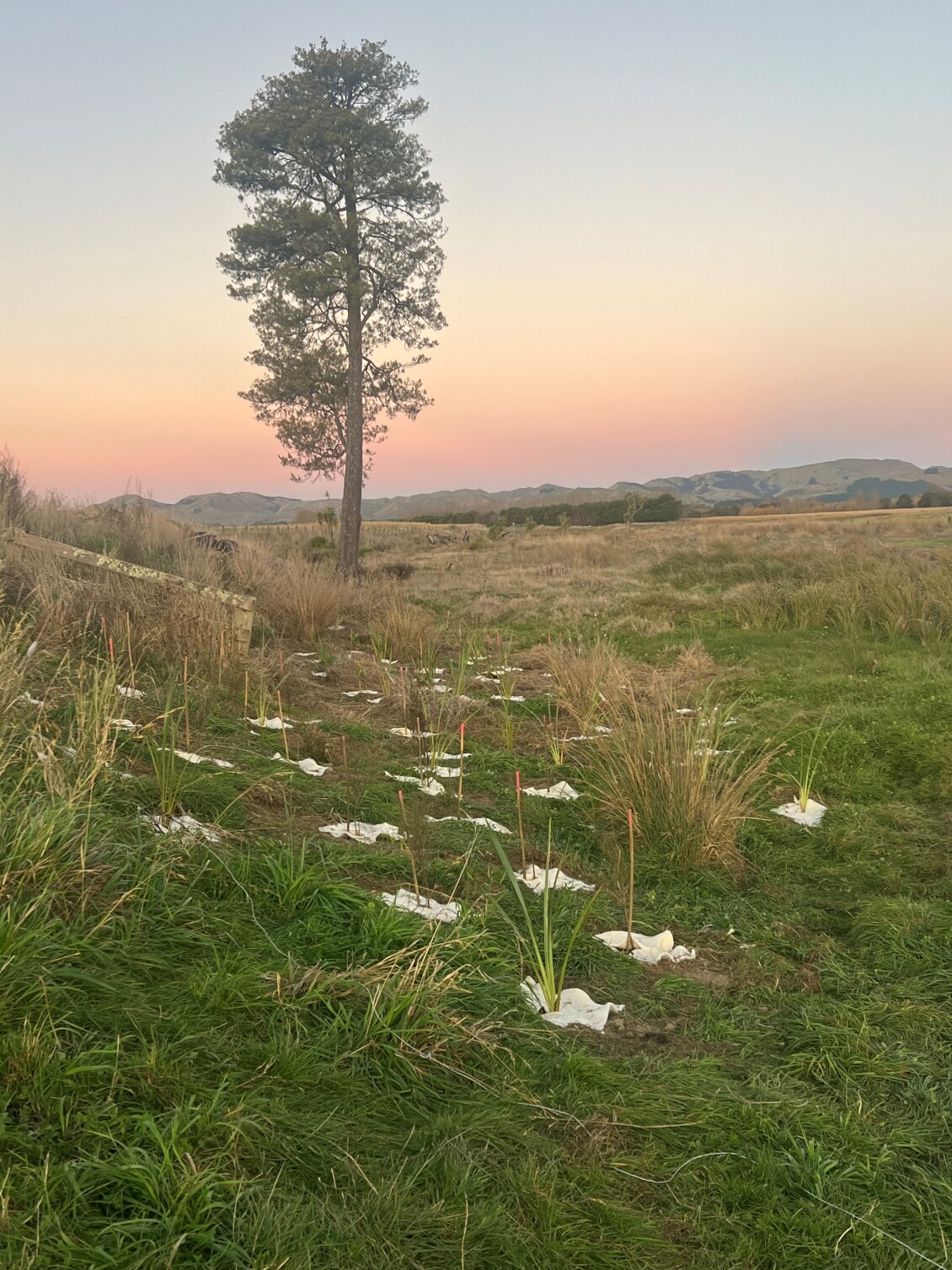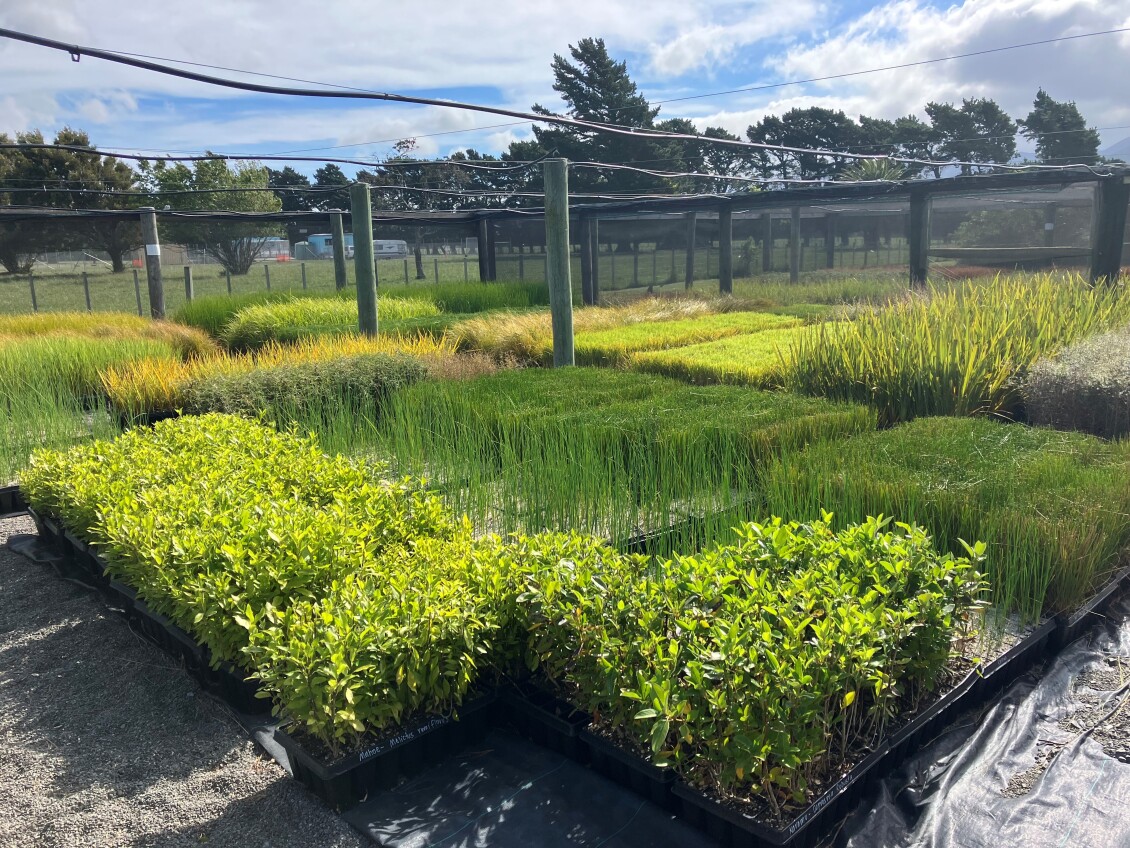Many hands make eco-systems work: Meet the locals committed to the restoration of Wairarapa Moana
Four grass roots projects in and around Wairarapa Moana are restoring the health of land and waterways connected to the largest lake and wetland complex in the lower North Island.
With support from the Wairarapa Moana Community Environment Fund, the projects are led by community groups, mana whenua and volunteers passionate about one of New Zealand’s most unique ecosystems and the wildlife it sustains.
Ruamāhanga Farm Foundation
The Ruamāhanga Farm Foundation is a community-oriented wetland and riparian forest restoration project, initiated through the restoration of eight hectares of former farmland near Martinborough.
With the help of local volunteers, mana whenua and schools, the foundation has been working to increase biodiversity, improve water quality and in co-founder Jane Riddiford’s words, “restore the mauri of this wāhi tapu (sacred place)”.
The foundation began in 2021, but it was in autumn this year that Jane felt its initial aims were coming to fruition.
“Within the space of three weeks it seemed like everything we had been dreaming about and working towards over the last three years came together,” said Jane.
“A new fence with gates and stiles was erected, a path cut by a local Lions Club member in his tractor to previously inaccessible parts of the wetland, and alongside the path local volunteers and school children planted hundreds of native trees and wetland plants”
The foundation also works with students from a conservation course run by Pukāha National Wildlife Centre.
“We love hosting rangatahi (young people) on the farm,” said Jane.
“It’s great to play a small part in connecting the next generation to the whenua (land) and all that flows through it.”
Introduced predators like possums are also being targeted by the foundation. With money from the Wairarapa Moana Community Environment Fund, it purchased an auto setting and re-luring trap to protect native plantings.
The funding, community involvement and sustained work of Jane, her husband and sisters has transformed the previously “dry, overgrown mess” that was the wetland area into something truly special.
“At the end of the three weeks of autumn planting, fence and track making this year, I walked along the path just as the sun was going down and thanks to the work of many hands the whole area looked and felt like a real wetland.”



He Kōtare Native Nursery
Over in South Featherston, the He Kōtare Native Nursery is propagating endangered species and planting them in and around Wairarapa Moana, to help restore the health of the Moana and its tributaries.
The nursery is part of Pae Tū Mōkai o Tauira, an incorporated society established to give Featherston a Māori voice on the South Wairarapa Māori Standing Committee.
An automated irrigation system was installed at the nursery in 2022 that uses a mains powered pump to draw water from the nursery bore.
Karen Mikaera, the treasurer of Pae Tū Mōkai o Tauira, says that the area in which the nursery is located is subject to power outages, that disrupt the irrigation.
“On these occasions in the past, we have experienced plant stress and some losses,” says Karen.
He Kōtare applied to the Wairarapa Moana Community Environment Fund with a plan to purchase a diesel-powered generator.
“Having a back-up power source ensures that we have a constant water supply for irrigation purposes during power cuts, therefore producing good healthy plant stock,” says Karen.
The nursery also focuses on raising community awareness of the water quality of the Moana and its tributaries.
On Waitangi Day this year, in conjunction with the South Wairarapa District Council's Māori Standing Committee, Pae Tū Mōkai o Tauira held a community event with a hangi and a hīkoi to the Moana.
On the breezy Moana edge, Karen showed the locals the scale of the planting done with nursery grown species, such as Buchanan’s sedge, which were bought by members of the community and Greater Wellington to be planted at the Moana. This species grows below the high tide mark, in the water, providing a sheltered spawning habitat for native fish species.
The nursery holds regular community planting days, enabling locals who buy plants and support the mahi to be actively involved in the restoration of the Moana.
“A recent planting day saw 50 people turn out in the rain and they planted out 1,200 Carex in two hours,” says Karen.
“We are delighted at the response, and our amazing community who all feel deeply for our Moana and her plight.”


Ōtauira Manga Restoration - Te Wakaiti
Also in Featherston, Ōtauria Manga (Abbots Creek) is receiving special attention from a community group.
The southern banks of the manga run along the border of land belonging to the Te Wakaiti Marae, just outside of Featherston.
“When it came to cutting a track alongside the stream, we started to realize just how special the area was and the vision to restore its banks was born,” says project lead, Jules Maher.
“The banks had been covered in every weed you can think of, but fortunately, there were a few mature tōtara, titoki, kōwhai, red matipo, mahoe and taupata and one large mataī that had survived.
“A crucial ally in our battle against the weeds was provided in July 2023 by David Kleinjin (kaitiaki of Te Wakaiti at the time), who crushed gorse, blackberry and hawthorn with his vintage red bulldozer, creating tracks and spaces to begin planting.
“Our vision is to recreate an environment as close as possible to what it was like before humans arrived, as well as to construct a beautiful walkway beside the flowing water for the community to enjoy.”
The Wairarapa Moana grant bought mulch, weed clearing machinery and weed killer, as well as irrigation equipment and materials to make tree guards to help the young plants cope with the extremes of the Featherston climate.
Demonstrating the connected nature of this work in the region, He Kōtare Nursery has also donated plants to the Ōtauira Manga restoration.
The local support for the project has been overwhelming, says Jules.
“Around 50 people have contributed labour and/or resources to the project so far, many of whom are locals from Featherston or wider Wairarapa, as well as some over from Wellington. Adam, the farmer who leases grazing at Te Wakaiti has also been a huge supporter.”
Jules says there are some stand-out regulars involved in the project.
“We’re so grateful for the regular, loyal support of Bruce, Ian, Patrick and Garry who have spent hundreds of hours working to clear weeds, plant, mulch, water and stake trees against the wind.
“They regularly show up for our Thursday working bees and get through a power of work. Without them the project would not have got very far.”
So far, over 2,000 native trees have been planted along the Ōtauira Manga thanks to the Te Wakaiti project, with plans for up to 5,000 throughout the 2.5 hectares of restoration area.
Pāpāwai Mangarara Stream Catchment Group
A little further north, the Pāpāwai Mangarara Stream flows near Greytown.
The stretch from Tates Reserve to the Ruamāhanga River forms a “meander” and is being tended to by the Pāpāwai Mangarara Stream Catchment Group.
John Argue helms the group and is described by Jules Maher as “Greytown’s eco-warrior”. John has also provided the Ōtauira Manga restoration project with sage advice, useful materials and many hours of labour.
John and his team used their grant from the Community Environment Fund to hire a 16-ton digger to remove willow trees growing around the meander.
Meanders play a crucial role in maintaining healthy aquifers, especially in regions with intense agricultural or urban activities, John says.
“By preserving and restoring our meander, we can enhance aquifer recharge, maintain groundwater levels, sequester carbon, support biodiversity and regulate the climate, making it a natural ally in the fight against climate change.”
“With advice from Greater Wellington, we have a planting plan to restore the meander that includes an increase in the density of sedges and native grasses in the wettest zones.
“This project wouldn’t be possible without the community. Neighbours have lent tools, donated plants, and showed up on planting days. It’s a shared commitment to healing our local waterways.”
The Greytown Scout group spent a day picking up over a ton of rubbish from an old dump site in the meander.
“They demonstrated that we have many enthusiastic young people in our community who are willing to pitch in to help restore our environment,”
Another day in early spring stands out to John as a reminder of the bigger picture of what they’re working towards.
“I was down at the site beside the stream with a group of local volunteers, planting pukio, mānuka and tōtara. There weren’t many of us, but it was one of those days where you feel the future starting to take root.
“One of the boys with us asked, “Will this grow into a forest?” and we all paused, imagining it. It’s been heartening to see our rangatahi, gain a sense of ownership and belonging through the mahi.”
Applications for the Wairarapa Moana Wetlands Project Community Environment Fund opened on 1 August and close on 1 October.
Community and mana whenua groups can apply for up to $12,500 to help with their restoration efforts.
The Wairarapa Moana Wetlands Project is a collaboration between Greater Wellington, Department of Conservation, South Wairarapa District Council, Ngāti Kahungunu ki Wairarapa, and Rangitāne o Wairarapa.
For more information visit Wairarapa Moana Community Environment Fund or contact waiwetlands@gw.govt.nz.
Get in touch
- Phone:
- 0800 496 734
- Email:
- info@gw.govt.nz
